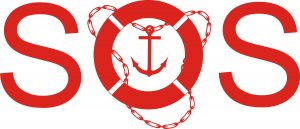
Protection and indemnity (P&I) insurance provides cover for third party liability incurred by a vessel, as such it is also known as liability insurance. A small amount of liability is covered by hull insurance, but third-party liabilities can very quickly exceed the value of the vessel. This is why P & I Insurance is very important for ship owners.
P&I Insurance is primarily provided to the industry through clubs. The clubs are mutual associations of ship owners who pay premiums into the club to cover the liability claims. Insurance companies also provide P&I insurance. This structure means that P&I Insurance does not have a standard set of clauses, each club or insurance company will have their own rules and policy.
A distinguishing feature of P&I Insurance is that it is essentially a contract of indemnity, meaning that the insured must have a claim due in order to recover from the insurer, this is known as the “pay to be paid” principle. In this arrangement the insured always retains liability, however the club will often handle the practicalities including the investigation, engaging legal advice, and correct payment of the claim.
The scope of P&I Insurance is very broad and covers practically all maritime liability risks other than those covered by workers compensation and the hull policy. Some examples of the third party liabilities P&I insurance covers are;
- Personal injury or loss of life,
- Third party property damage,
- Liability due to a collision,
- Damage to fixed and floating objects (piers),
- Stowaways and repatriation,
- Removal of wreck,
- Salvage operations,
- Civil liabilities accrued due to pollution or oil spills.
Liability insurance is particularly important as the costs of salvage, wreck removal and oil spills, and other liabilities can very quickly amount to costs several times the value of the vessel.
The Transport Operations (Marine Insurance) Act 1995 (QLD) requires that all ships over 15m in length have P&I insurance with coverage beginning at $250,000 for pollution clean up and $10,000,000 for salvage and wreck removal. The type and length of the vessel determines the insurance policy requirements under Queensland legislation.
